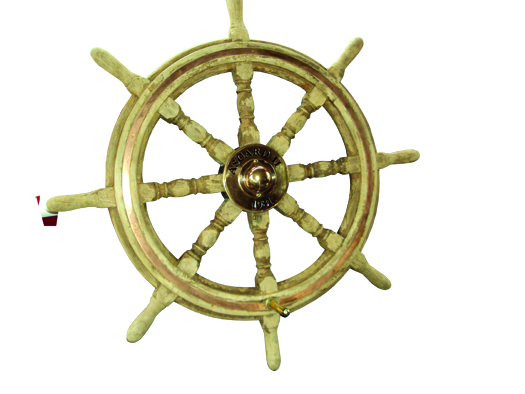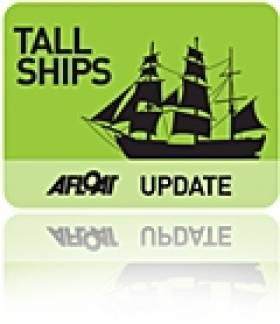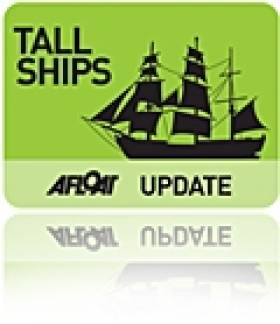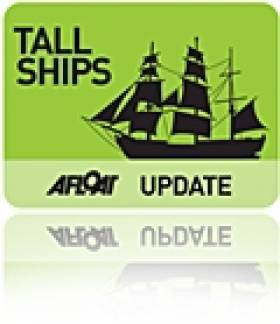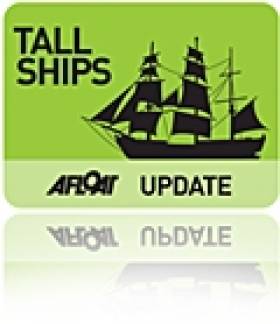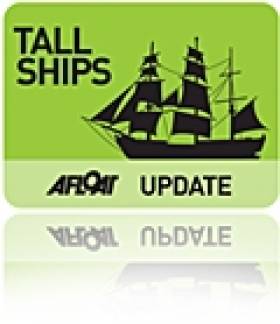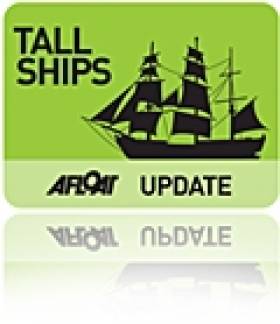Displaying items by tag: Waterford
However, from June 30-July 3, when the ships are moored in Waterford and when we do go down to the quays to see them, the public must be aware of the dangers associated with closeness to water and be actively responsible for their own safety and that of their children! No doubt, every precaution will be taken to ensure as far as is practical that safety precautions and rescue equipment are in place for your protection. However, this does not alter the responsibility we have for our own personal safety and that of our children at all times.
For this reason, the host port team for the Tall Ships visit will have in place comprehensive safety and management arrangements, coupled with regimes for rescuing people in the event of a water related accident. Again, this in no way relieves any visitor to the quaysides of responsibility for their own personal water craft and all on board and the safety and care of all.
Therefore:
Do not go too near to the quayside edges; remember falling down between a quay and a boat is one of the most difficult places to get rescued from.
If anxious to see or visit a particular Tall Ship, don't push those in front of you towards the water's edge. Take your time; the ships are in Waterford over three days.
If going on board any boat or ships, never jump from the quay onto the boat, or indeed from boat to boat. Always use a gangplank if available. If not, you must take extreme care when crossing.
Excessive alcohol and water do not mix. Therefore, visitors to the quaysides should ensure that they do not have excessive drink taken.
Those who invite people on board their vessels, regardless of size, must take a responsible approach to the availability of alcohol - bearing in mind the inherent dangers of being on board a vessel at all times under the influence of any alcoholic drink.
Do not climb on or over any railings, walls or other barriers that protect the quays from the water.
On smaller vessels, there is a definite legal requirement in relation to wearing life-jackets and one should be familiar with this requirement.
Ringbuoys and other lifesaving equipment placed on the quaysides should not under any circumstance be interfered with, they are provided to save lives in the event of someone falling into the water.
For those afloat, MARINE NOTICE 047 of 2011 has significance and all should make themselves aware of this important document which covers all recreational craft afloat and the responsibilities with regard to their vessel.
In conclusion, it behoves every person to ensure that The Tall Ships Races will be a safe and memorable occasion to visit Waterford with its noble quays, a once-in-a-lifetime spectacle to have seen and enjoyed by all who visit the city and port.
Calling "112" or "999"- Ask for the "Coast Guard".
If you see someone in trouble in the water (or you think someone is in trouble) don't hesitate to dial one of the emergency numbers (112 or 999) and ask to be put through to the "Coast Guard". When you are connected to the Coast Guard, give a brief description of what you saw and the Coast Guard will decide on the necessary action to take.
Remember! Always ask for the Coast Guard, as this will avoid any unnecessary delay by being connected to the wrong service particularly if someone is in trouble in the water. During the Tall Ships visit to Waterford should a telephone not be available ask any Garda, Civil Defence Officer or other steward on duty for help.
The yacht once owned by the late former Taoiseach Charles Haughey will be only Irish entrant in the Tall Ships Races at Waterford later this month.
The Irish Times reports that Celtic Mist will take part in the first leg of the race to Greenock in Scotland before it is fitted out for its new life as a research vessel for the Irish Whale and Dolphin Group.
The IWDG's Simon Berrow confirmed that it has accepted the Haughey family's offer of the yacht as a gift to support its study and conservation of whales, dolphins and porpoise in Irish waters.
He said the group first had to explore the feasibility of running such a large vessel before it could accept the "very generous offer".
The Irish Times has more on the story HERE.
Eagle Crew Get Taste for Porridge After Waterford Stop
The crew of the US Coast Guard clipper Eagle have taken home a taste for porridge oats following their visit to Waterford ahead of the Tall Ships Races.
Irish Central reports that the 140-plus crew of the training vessel took on a consignment of Flahavan's Irish Oats for their summer voyage throughout Europe and back across the Atlantic to New York on 5 August.
John Noonan of Flahavan's said the porridge oats "should certainly help keep their energy levels up as they complete the rest of their voyage. As we know, breakfast is the most important meal of the day, whether you're on land or sea."
Irish Central has more on the story HERE.
Black Diamond Ready for Success at Tall Ships Races
The Hartlepool Mail reports on one skipper who's making final repairs to his vessel ahead of the Tall Ships Races in Waterford this month.
Calvin Whitehead, captain of the 45ft Black Diamond, will set sail next Monday from Hartlepool with a crew of nine young people who will have the chance to gain valuable sailing experience.
The 29-year-old is hoping to repeat the class C ship's results in last year's race, where it finished second in its category.
"The boat is in good nick and the crew has mostly sailed before. We have a pretty good chance this year," he said.
The Tall Ships Races kick off in Waterford from 30 June to 3 July before the fleet sets sail for the Shetland Islands, then Stavanger in Norway and finally Halmstad, Sweden in August.
Tall Ship Eagle To Arrive in Waterford Tomorrow
The crew of the Coast Guard Barque Eagle, America's Tall Ship, is scheduled to arrive at the Frank Cassin quay in Waterford tomorrow, a month ahead of the Tall Ships festival in the city.
To track Eagle's current position now off the Irish coast click here.
Ireland is the first port call during the Eagle's 2011 summer training cruise, which celebrates the ship's 75th anniversary of its construction in Hamburg, Germany, in 1936. To follow Eagle's journey on Facebook, visit www.facebook.com/coastguardcuttereagle.
Collaboration with other sail training bodies to establish a regular Tall Ships festival in Ireland is one of the long term goals of Sail Training Ireland's new youth development manager.
As previously reported on Afloat.ie, Michael Byrne took up the new post at Dublin Port last week. His first tasks include fundraising, planning structures for membership, administering bursaries for sail training experience and preparing for the Tall Ships visit to Waterford next month.
But he has also signalled his intent in the long term to "co-operate and engage with other sail training associations and organisations with the view to establishhing a recurring STI-endorsed Tall Ships maritime festival every three-to-five years."
Byrne also hopes to sponsor and support sail trainees on boats around the world to give them invaluable experience at sea.
For more information visit www.irishsailtraining.com.
Seascapes Highlights Two Atlantic Voyages
This week's edition of Seascapes on RTÉ Radio 1 features accounts of two very different voyages across the Atlantic.
Presenter Marcus Connaughton hears from Pat Hanafin who is currently crossing the pond on board the US Coast Guard clipper Eagle, which as previously reported on Afloat.ie is due to call at Waterford on 27 May ahead of the Tall Ships Races.
The show also features news of a group of sailors hoping to retread the route of St Brendan's famous voyage.
A crew of "mariners, poets and musicians" will set sail from Dingle on 16 May - St Brendan's Day - on the 45ft vessel An Seachrán, heading up the west coasts of Ireland and Scotland towards Iceland.
The latest edition of Seascapes is available to listen HERE.
Reviving the Age of Steam for Waterford's Tall Ships
In The Irish Times on Thursday, Tim Sweetman from Islandbridge writes that steam trains could add a touch of old-fashioned glamour to the Tall Ships Races in Waterford this summer.
"Perhaps Irish Rail and the Railway Preservation Society might come together to provide more atmosphere," he suggests. "There's a perfectly good line available from Waterford to Rosslare that is looking for some business."
What else could be done to make the most of the Tall Ships visit? Make your own suggestions in the comments below!
Waterford Businesses Want Fair Pricing at Tall Ships
Waterford's business and tourism leaders have demanded "fair pricing" in the city during the Tall Ships Races this summer, The Irish Times reports.
Reports have circulated that local hotels and other businesses were planning to raise their prices for the half-million visitors expected to descend upon the south coast city at the end of June.
But Fáilte Ireland, Waterford Chamber of Commerce and Mayor Mary Roche are backing a fair-price initiative, urging the city's many shops, cafes, restaurants, bars and tourist attractions to offer value for money.
Mayor Roche said the hosting of the Tall Ships Races was "a priceless opportunity" to showcase Waterford on an international stage.
The Irish Times has more on the story HERE.
Asgard II's wheel and bell look like new again following their recovery from the sunken Irish sail training brigantine. Unlike 2005, Asgard won't be sailing in this year's Tall Ships race when it calls to Waterford but one suggestion doing the rounds is that the shiny bell should sound the start of the race from Waterford on July 3. It's a nice idea, certainly a lot nicer than rotting on the French seabed or sitting on a shelf in the Office of the Receiver of Wrecks. Let us know what you think in our poll on the left hand column.
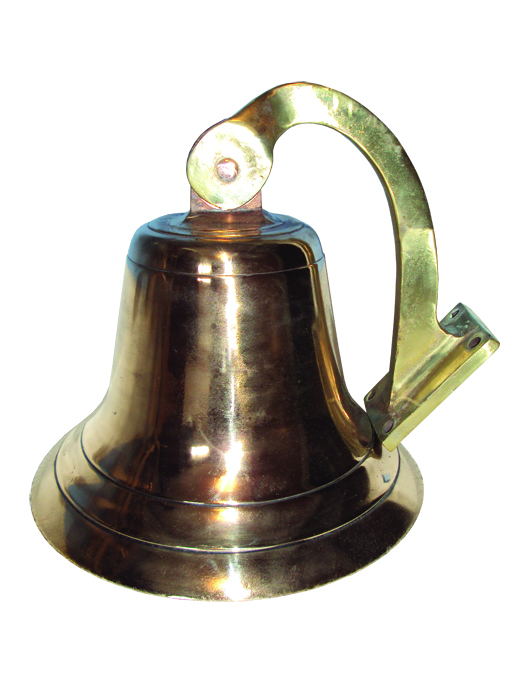
Back from the deep: Asgard II's bell (above) and wheel look like new again. Should they have a place at the Tall Ships Waterford, vote in our reader poll!
